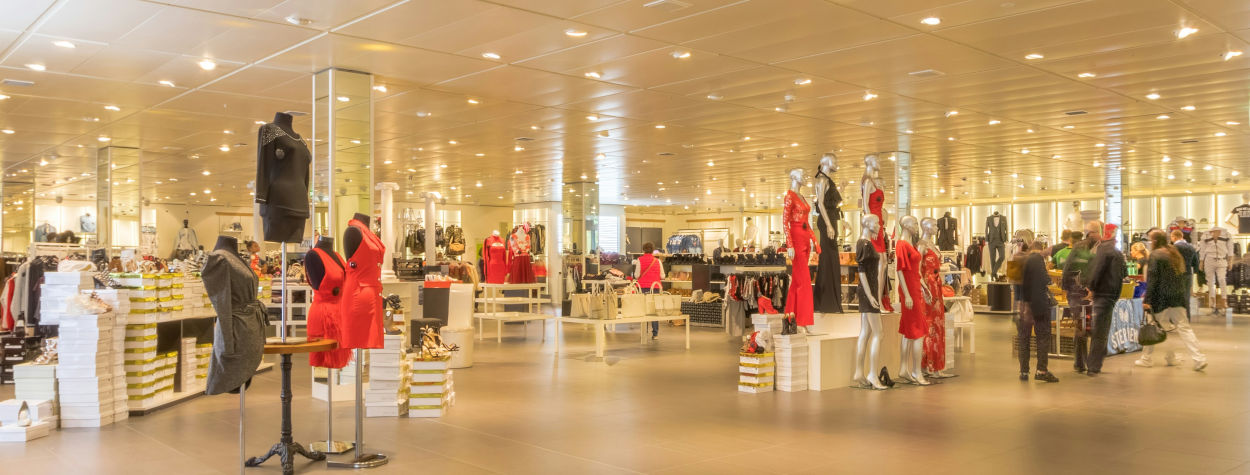Most days, I advise founders about expanding their businesses by diversification. All have ecommerce stores. Some sell wholesale to independent retailers. However, it’s not a choice between ecommerce vs retail but the opportunity to try both.
In this article, I hope to persuade you that taking an omnichannel approach could be a smart move for your ecommerce business as it will allow you to grow sales and brand awareness.
If you’re currently stuck choosing between ecommerce vs retail, be aware that there are plenty of options available that are easy to test before jumping in and making a costly mistake.
Ecommerce vs Retail: What’s the Difference?
In the last article, we discussed some of the different sales channels we have available. They largely fit into two buckets: Direct and 3rd party.
Direct sales channels include your online shop, branded retail store, and affiliates. 3rd party channels include Amazon, eBay, wholesaling products, and starting a TikTok shop.
As with marketing, we have plenty of ways to sell products. So, the idea is to focus on ones that will be profitable and not just good for brand awareness.
Many founders, therefore, think it’s a choice between ecommerce vs retail. But this is an oversimplification. In my mind, rather than it being an “either” “or” situation, it should be “and”.
Blending an online store with social commerce, wholesaling, and owned retail outlets could be the best way to grow your brand. We call this approach omnichannel commerce.

Ecommerce: Global Reach From A Single Location
Having run a global ecommerce business that started in my spare bedroom, I can confidently state it’s possible and far cheaper to run than a retail store. However, it’s not easy by any stretch of the imagination.
With a simple Shopify or Woocommerce shop, you can drive traffic from all over the world using SEO, PPC, and social media. Over time, you can test various marketing tactics to find the mix that drives revenue.
Rather than having to spend time dealing with customers who come into the store, you can focus on marketing your business, delivering a fast service, and expanding the product range.
Due to the simplicity of the business model, more people than ever before are starting an ecommerce business. The competition can be fierce! However, many don’t have the staying power to see their idea take off.
Retail: Tapping Into An Established Customer Base
One of the biggest problems with any online shop is getting people to visit your store. As a marketing agency, we solve this using a unique strategy-first approach.
Physical stores typically come with plenty of foot traffic as people want to experience products in real life. Plus, having several shops in a rank together creates a reason for people to visit. Whether they are the right type of customers is another question.
The trade-off is having a store is expensive. And that’s before you fit it out or buy stock, not to mention bills and local taxes. Again, retailing can be very costly.
Cost Structures: Online vs Physical Presence
Opening branded stores is a costly endeavor, hence why many people want to start an ecommerce business. However, there are ways to include retail in your mix that aren’t as expensive.
With an ecommerce store, the two largest costs at the start are stock and marketing. As the business expands, staff costs grow and, in most cases, will be up there with marketing and stock costs. You’ll also need to rent storage, computers, desks, shelving, software, and more.
Compare this model with the cost of running a shop, and you’ll see why a lot of brands are closing shops and going fully online.
With a retail space, you need to pay for the location, taxes, bills, warehousing, staff, marketing, software, and more. Renting a shop can cost thousands per month and that’s before you add shelves, furniture, and products.
It can be cheaper to open concessions within existing retail stores as you have less overhead or see if you can hire an unused store for a month and run a pop-up shop. Both of these methods can also act as a testing ground for an expansion into retail without betting the house.

Customer Experience: Convenience vs In-person Interaction
I talk a lot about customer experience, as it’s a complex topic and an area that requires a lot of thought.
Many still believe you can only have a great customer experience in-store, especially when buying clothes or electronics. These people are prioritizing physically touching items over the overall shopping experience. They’re also relying on a staff member to guide the purchasing experience.
Contrast this with online, where you have seemingly endless options coupled with next-day delivery, and you’ll quickly realize shopping in-store isn’t what it used to be! Plus, you don’t need to leave the house to purchase items.
Moving Beyond Ecommerce vs Retail To An Omnichannel Approach
It’s not a choice between ecommerce vs retail, as we can take an approach that blends both. Let’s explore omnichannel and how this approach can help you skyrocket your revenue.
Integrating Online and Offline Channels
If you’re adding a retail element alongside your online offer, it’s critical they work together and aren’t siloed. Running two or more elements in separation will create internal and external friction, leading to a poor customer experience.
The journey to better integrate physical stores and online will include thinking about:
- Can customers can order online but pick up in store?
- Will you allow online purchases to be returned at a physical shop and vice versa?
- Can you use tablets in store to allow purchases of items that aren’t in stock but could be delivered within a few days?
Exploring Retail As An Ecommerce Brand
A mistake I’ve seen time and time again is an ecommerce brand believing it can explore additional channels without losing focus on its core offering that’s paying for the expansion. They usually waste time, effort, and cash without much tangible progress.
You don’t need to open physical stores to embrace retail. You could try wholesaling, concessions, and pop-up shops. Compared to opening a branded store, these options will use a fraction of money, time, and resources.
Once you’ve tested the market, you can begin planning to add a retail offer alongside your ecommerce website. Just don’t bet the house on an untested expansion plan! That’s the quickest way to go broke!

Embracing Ecommerce As A Retailer
If you’re running several retail stores, you might not have the focus or money to jump fully into ecommerce. That’s fine. You might have a complex business that won’t be easy to recreate online.
Last year, I advised a business doing $4m in retail sales that adding an ecommerce element wouldn’t be easy. They would have to build a new website, update their inventory management system, create a packing area, train staff to pick and pack items, and more.
Such a project could easily cost $250,000 and take 18 months to deliver. Plus, it would require the management team’s time and effort, and divert their focus away from running the core business.
It’s best to start small with a basic selection of products on a simple online store. As you generate more sales, you can reinvest the profit to grow your ecommerce offering. If you don’t see online sales, you’ve only risked a small amount of money, time, and effort.
Future Trends and Considerations
Predicting the future of ecommerce vs retail is a little bit of fun! I think we’ll see more large retail stores with multiple brand-run concessions rather than having a lot of shops on a traditional high street.
The shops that will survive need to adapt in three ways. They will need to offer an hour collection service allowing you to order online and collect within 60 minutes.
I believe more stores will allocate more space to warehousing and less room for displaying items on shelves or racks to enable their fast collection service.
For a store to survive, it must invest in the customer experience and employees’ soft skills. This means paying them more in order to attract a better quality of person and training them effectively in the product range and sales techniques.
On the ecommerce side, AI will be game-changing. It will allow you to experience products at home before you buy. Imagine trying on` a luxury watch before going to the store or knowing if a new cooker will fit in your kitchen and look good without measuring your space.
Another use for AI is being able to answer basic customer support issues, such as delivery queries, starting the returns process, and informing customers of stock levels. The Chatbots of the future will make our current ones look childish!
The future isn’t ecommerce vs retail but taking an omnichannel approach that offers a seamless customer experience.
Want an actionable plan to grow your online sales and reach your business goals? Let's build one together. Book Your Get To Know You Call







